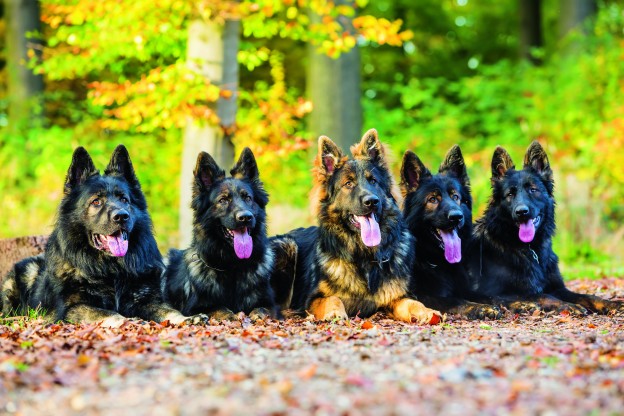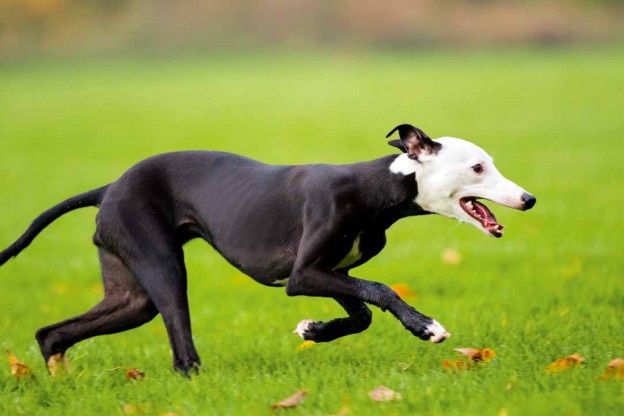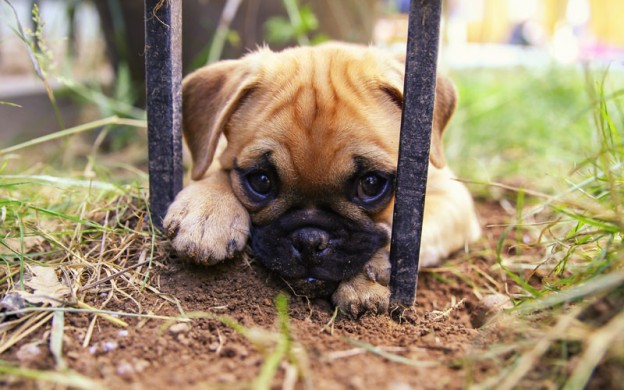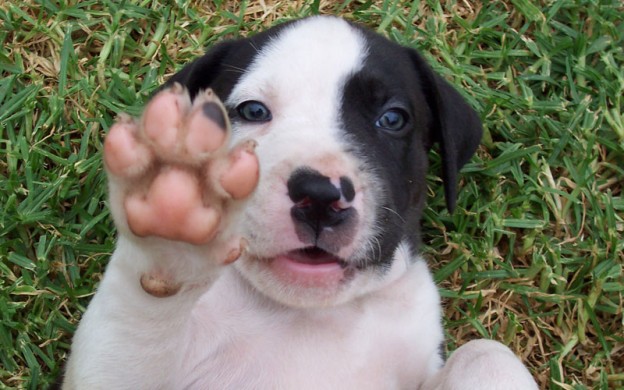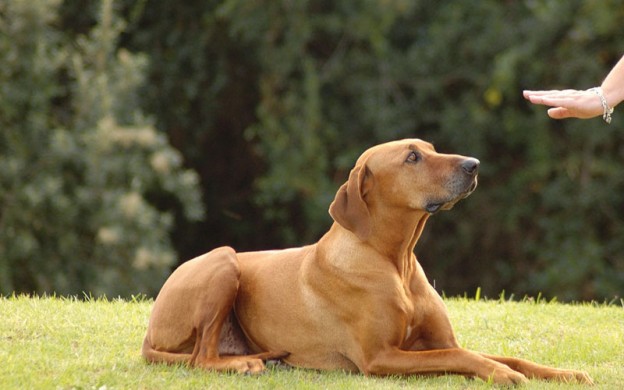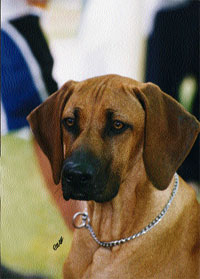
Warning: We advise that some of the content in this article may be disturbing to some readers.
When the words dog fight are mentioned, dog lovers across the world cringe. But this deadly pastime could be happening in your neighbourhood and the only way we can stop the rot is to report it. Education is your greatest tool so if you know what happens at a dog fight, you may be able to spot a fighting dog and alert the authorities. Ultimately, through articles like this, we hope to expose dog fighting and help stop this horrific practice from occurring.
Training dogs to kill is not a new concept in our society. Throughout history, dogs have been trained to fight in battles and amongst themselves. In the 15th century the Spanish used dog warriors, while Christopher Columbus used dogs to fight Native Americans. In England in the 1800s, the upper class were entertained by dog fights while in Australia, Aboriginal people relied on dogs for hunting or killing kangaroos. Colin Muir of the American Pitt Bull Terrier Club of Australia says dog fighting became common when a fight was used as the warm-up event for other blood sports, such as bull baiting and bear baiting in the Elizabethan period.
The situation today
RSPCA Media Officer Claire Munro says many dog fights are instigated by organised dog fighting rings. Its an underground activity, however the RSPCA has prosecuted a number of people in Australia and has ongoing investigations into dog fighting rings, she says. Munro says dog fighting is illegal in all states/territories. For example, in NSW, under the Prevention of Cruelty to Animals Act 2000, the maximum fine for anyone using, managing, controlling or authorising a place, or receiving money for the admission of another person to a place, which is used for the purpose of causing an animal to fight, is $5500 and/or imprisonment for up to six months in the case of an individual or $27,500 for a corporation. The maximum fine for anyone who causes, procures, permits, encourages or incites a fight where one or more animals are pitted against another animal(s), whether of the same species or not, is $5500 and/or imprisonment for up to six months in the case of an individual and $27,500 for a corporation.
If, as a result of a fight, a dog is killed, deformed or seriously disabled or if the animal is so severely injured or diseased or in such a physical condition that it was cruel to be kept alive, an offence of aggravated cruelty may have been committed for which the maximum penalties are $22,000 and/or two years imprisonment for individuals and $110,000 for corporations.
Despite what Munro says, Muir claims organised dog fights don’t really happen in Australia today. Unorganised dog fights will continue to occur while idiots own dogs, he says. An unorganised dog fight usually refers to the odd criminal who trains his dog to fight so he can put on a show for his equally criminal friends in his backyard.
Muir says its common in Australia for opponents of the American Pit Bull Terrier (APBT) to say they oppose the breed because they want to stamp out dog fighting. There doesn’t appear to be any evidence to suggest organised dog fights occur in Australia. My belief is that the claims of organised dogfights relate to individuals claiming their dog is the toughest and [setting up] a completely unorganised fight. A small number of people have been accused and convicted, I think about six, in relation to animal cruelty issues that would fit into the unorganised category. This is a bit like saying there is no difference between a title fight and a pub brawl. The only solid evidence that I have seen in relation to organised dogfights is an article by Banjo Patterson in the Bulletin in 1898.
Dr Katherine Briscoe from the Gladesville Veterinary Hospital in Sydney also believes dogfights are not particularly prevalent in the majority of areas. Certainly there are some regions in which dogs are treated for fight wounds more often than others for example, the Northern Territory and rural Australia, she says.
The situation in New Zealand
SPCA Senior Inspector Bruce Wills says there has been an upsurge recently in street fighting amongst Polynesian gangs. We have had six convictions in the past year or so for dog fighting in the Auckland area, he says.
The street fighting we are seeing is relatively recent in correlation to the rise in popularity of the Polynesian gang culture. The underground fighting has been around a lot longer, probably since 1987. Under the Animal Welfare Act 1999 in New Zealand, its an offence to keep, use, manage or assist in a place for the purpose of an animal fight; or baiting or otherwise ill-treating an animal; to be present, for the purpose of, or in any manner encourage, aid, or assist in the fighting or baiting of an animal. It is also an offence to knowingly own, possess, keep, train, or breed an animal for the purposes of animal fighting; or to knowingly sell, buy, transport, or deliver to another person any animal for the purposes of animal fighting. The penalty is imprisonment for six months and/or a fine of $25,000 for an individual or $125,000 for a body corporate.
In America
The one country where there is strong evidence of organised dogfights is the USA, with Buffalo being one of the most well-known places for it. Apparently, its the city’s drug trade leaders who usually stage these fights. Dog owners and participants bet, stake cars and motorcycles, property, drugs, guns, jewellery, and up to $20,000 on a fight. Some dog fights are quite elaborate. Twenty-five or more spectators attend the event and pay a cover charge. Marijuana, alcohol and even popcorn are available. Here, dog owners have been known to take a hatchet and chop the dogs head off if it loses. After the fight, wounded dogs are generally left there. The dead are bundled up in garbage bags and dumped. Apparently, at least three professional athletes were known to frequent the events, betting between $10,000 and $20,000 on the fights.
Dogs selected for dog fights
The most well-known dog fighting breeds appear to be the Dogo Argentino (Argentinian Fighting Dog), developed in South America as a Puma and Jaguar hunter; the Filo Brasileiro (Brazilian Mastiff / Brazilian Fighting Dog), developed from Spanish and Portuguese mastiffs and Bloodhounds to track and control livestock and large game. Tosa Inu (Tosa Fighting Dog / Japanese Fighting Dog), bred in Japan from crosses between native Shikoku fighting dogs and imported mastiffs. Great Danes, Bulldogs, and Bull Terriers; and the American Pit Bull Terrier (Pit Bull Terrier, American Pit Bull), descended from the Staffordshire Bull Terrier crossed with other fighting dogs, including the extinct fighting Bulldog. Colin Muir says that apart from the above, other breeds used for dog fighting have been the American Staffordshire, Staffordshire Bull Terrier, Bull Terrier, White Terrier, Sharpei, Pug, Boxer, Akita, Bulldog Mastiff, and Bull Mastiff.
Breed is a relatively new term in relation to most dogs. The original fighting dogs were bull and terrier and were line bred in individual yards. These dogs formed the basis for the development of what we know today as breeds. Many of these dogs were as much developed for hunting or vermin extermination as they were for fighting each other, Muir says.
What the Humane Society says
A dog fighting expert from the Humane Society of the United States, Eric Sakach, says dogs are chosen for their aggressiveness and size, and then bred to remove the natural instincts that could cause a dog to lose a fight in the pit. If you look at the ways dogs fight in the wild, its to drive a rival away or for some desired objects. Those fights end when a dog displays a sign of submission, like rolling over to expose their stomach. Sakach says that during fights in the wild dogs rarely do much damage to one another. There’s a lot of growling, staring, raising hair to look bigger. Biting is a last resort. In pit-fighting dogs this characteristic has been removed through breeding. They are bred not to give off signs that normal dogs do. In pit fights, they fight to the death or exhaustion.
Sakach says that out of a litter of six Pit Bulls, only one or two would possess the character or gameness criminals are looking for. When they are 16 to 18 months old they begin schooling. They’re brought into a pit to fight against other dogs that aren’t overly rough. Breeders make sure the dogs win and always praise them, reinforcing their desire to fight. After schooling is complete, trainers want to determine the dogs endurance level or depth of gameness. Game tests can last an hour or more with the prospect taking on dog after dog until its exhausted. If it survives, it becomes a match dog. Sakach says training typically includes endless hours on heavy treadmills or running circles in a back yard chasing a lure, running on the road and a special diet meant to trim the dog to a lean pre-determined weight. Some trainers withhold water to dehydrate their dogs. The thinking is a dehydrated dog bleeds less. These dogs are mauled for hours, and the losers are often shot in the arena or tied to a brick and thrown in the canal.
Other ill-fated dogs usually those that are stolen can play the role of sacrificial victims. These poor souls can include any medium breed as well German Shepherds or mixed breeds. They are cut or stabbed and tossed in with the dogs used for fighting so they can develop a taste for blood.
The fight
During an organised fight spectators poke dogs with sharp objects and hit them to make them continue fighting. Dogs are often forced to fight until one of them dies. Witnesses report seeing blood-soaked dogs with life-threatening injuries left to die in the fighting ring. Dogs which are lucky, or perhaps unlucky, enough to survive later die from blood loss, shock, dehydration, exhaustion or infection. Once a dog is too injured to fight, its dumped or killed.
Other dogs trained to attack humans or kill small animals
Some dog owners train their dogs to kill other animals, particularly in rural areas. Pig and kangaroo hunting is a favourite pastime in these areas, with the animals either shot by the dog owner when caught by their dog or killed by the dog. These dog owners argue their dogs are not dangerous to people or children, however this was not the case for a Bathurst woman who was killed by her daughters two dogs in October last year. She was so viciously attacked that the flesh on all her limbs had been ripped open, exposing bone in some parts, including her entire skull. The woman, who was almost blind, was found barely alive lying naked in the carport of the home in which she lived with her daughter and her daughters partner. Investigation revealed that one of the dogs was trained to hunt pigs.
In 2002, a controversial report on the Today Tonight show sent shockwaves through the nation. Neville Williams, who ran the Bite Club, claimed he could teach any dog to bite. An unidentified woman who also appeared on the show said Williams had trained her 44kg Rottweiler to attack and if anyone touches me, look out. The woman said she could make the dog go in and bite but then said the dog wouldn’t harm anyone.
A spokesperson for the German Shepherd Dog Club of Victoria at the time said: I don’t have a problem with dogs being taught to bite in the police force, the military or trained as protection dogs for property they are complying with all the rules and regulations. But I do have a problem with the average dog owner out there who doesn’t know what they are doing and doesn’t know the potential damage that can be inflicted by a dog.
Some may wonder if there is a difference between dogs trained for dog fights and dogs trained for the police or military. The difference is that dogs trained for the police or the military are trained to attack, not kill. More importantly, dogs are trained by professionals through positive reinforcement.
Phill Evans, former member of the Australian Army Explosives Detector Dog Unit, now working for the New England Regional Companion Animals Shelter, has instructed and trained police dog handlers as well as many other specialist military and civilian dog trainers. Evans says that at no time have dogs been trained to kill in the police or military. Security dogs trained by the military are taught to grab and hold, as are police dogs. The purpose is to restrain the offender so that they may be apprehended. Police dogs are also used as search dogs, finding missing people lost in the bush, for instance. These dogs are extremely highly trained and live within the community throughout their lives, usually residing with the officer/handler. Any dog of unsound temperament is unsuitable for the level of training required, he says.
Signs of dog fighting what to look for
There are several signs you can look out for which may indicate dog fighting is happening in your area. These can include ownership of several adult dogs and/or puppies which are confined by thick chains with/without weights on their collars; dogs made to jog or use a treadmill; a cat mill which confines a small animal and encourages the dog to chase it. As a reward for its hard work, the dog will be permitted to capture and kill the animal. These baits are often stolen or obtained through free to good home advertisements. Also look out for people of all ages coming and going in groups from a residence or other sites, some with dogs; and seeing people gathered in unusual places such as an abandoned house, empty warehouse, residential basement etc.
Dr Briscoe suggests looking out for accumulations of people and dogs in areas, mostly at night. The noise from a dog fight would be heard lots of snarling and barking as well as cheering. Those dogs in the fight would often have injuries suggesting they were in the fight, she says. There may also be some noticeable signs on dogs used for fighting, such as recent or long-standing wounds and abscesses; short ear crops; scars on the head, throat, legs, and ears; wide leather or web collars with heavy rings; puncture wounds and lacerations.
- Anyone suspecting a dog fight in their area should ring their local police station or the RSPCA in their state. All information is confidential.
The RSPCA will launch their yearly Operation Champion in October/November, targeting those involved in cock and dog fighting. If you suspect anything, put up your hand and call the police or the RSPCA to help stop this horrible practice from continuing. Dogs used for hunting should be treated with EXTREME caution, especially around small children. If you are concerned about a dog, please contact your local police and council. All your information will be confidential. The only way we can stop these horrible events is to speak up.
The RSPCAs stand on dog fights
Taken from the RSPCAs OPERATION CHAMPION October 11 & 12 2001 fact sheet.
Q. What is dog fighting?
A dog fight is a bloody contest in which two dogs bred and trained to fight are placed in a pit for the purpose of attacking and mauling each other to earn money for their owners and spectators. A dog fight ends when one of the dogs is no longer able to continue fighting or eventually dies.
Q. Why is dog fighting cruel?
The injuries inflicted and sustained by dogs participating in dog fights are often severe, even fatal in some instances. Dogs used in these fights are specifically bred and trained to be unrelenting in their attempts to overcome their opponents. Dogs who survive a fight often die of blood loss, shock, dehydration, exhaustion, or infection hours or even days after the fight.
Q. Is dog fighting a serious issue in our community?
Yes. Dogs used for fighting have been bred to be dangerously aggressive. The presence of these dogs in our community may increase the risk of dog attacks not only on animals, but also on people.



